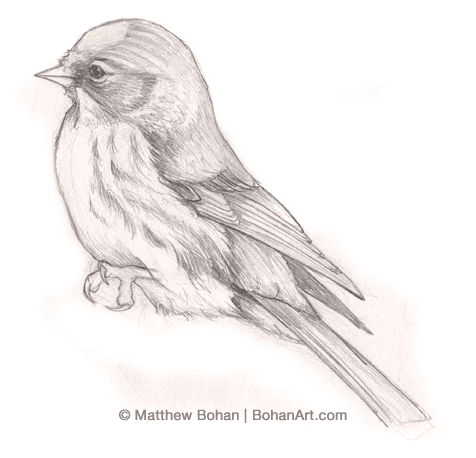Common Redpoll Sketch
Blue-tipped Dancer Damselfly Step-by-Step
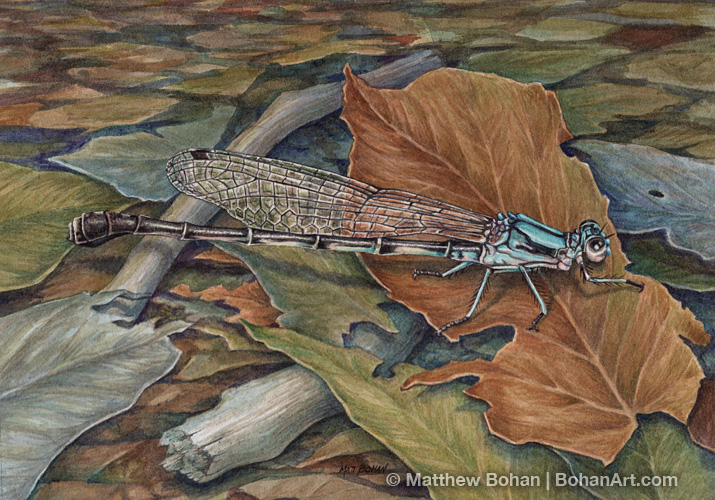
Damselflies have long been a favorite insect of mine. I remember first seeing them when I was very young. I thought they looked like little jewels. I’d see different varieties when we’d go to a nearby lake. All the damselflies, with their brilliant blues, vivid greens, fiery oranges, yellow and reds are stunning, but the black-striped ones always seemed special. I need to get some good photos of males to paint from. Here is a painting of a female. They are a little less colorful, but still beautiful.
Original painting is available here.
Prints are available here.
Ebony Jewelwing Sketch
Over the years I’ve done a few paintings of these spectacular, yet common broad-winged damselflies. Its fun to watch these efficient predators eating mosquitoes along a stream in the woods. Admittedly they don’t look the same with out the black of the wings rendered in the sketch. I held off on that detail in this sketch since I’m getting ready to do the watercolor.

Bay-breasted Warbler Step-by-Step
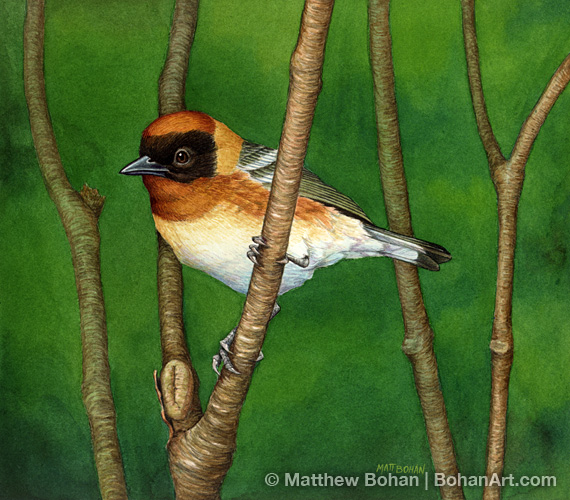
Any day I see a bay-breasted warbler is a great one. This painting is based on photos of a cooperative male we found at Metzger marsh, at Crane Creek, OH. That is a phenomenal place to see migrant warblers and other birds.
Original painting is available here.
Calico Pennant Dragonfly Sketch

Last summer I took hundreds of photos of dragonflies. This calico pennant was a real beauty. I found it in the field behind our house sitting on some common dock. On nice mornings, the kids and I would head over to a nearby pond to see what wildlife we could discover. Coming across this cooperative dragonfly one day was a nice surprise. I didn’t render in all the spots along the wings. I’ll get to that when I do the watercolor. This will be fun to paint.
Female Forktail Damselfly Step-by-Step
Forktail damselflies can be hard to tell apart in the field. The males have some diagnostic features making identification a little easier. Discerning the species of a female forktail is well beyond my abilities of identification. Nonetheless, they are beautiful and interesting insects.
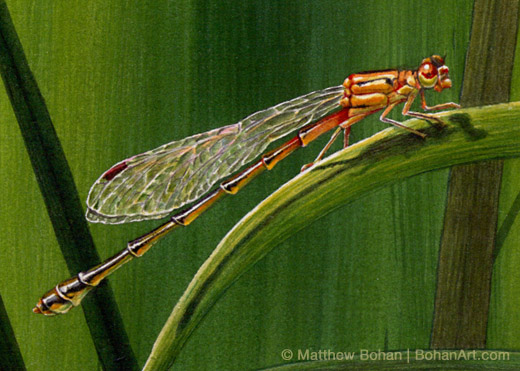
Pileated Woodpecker Step-by-Step
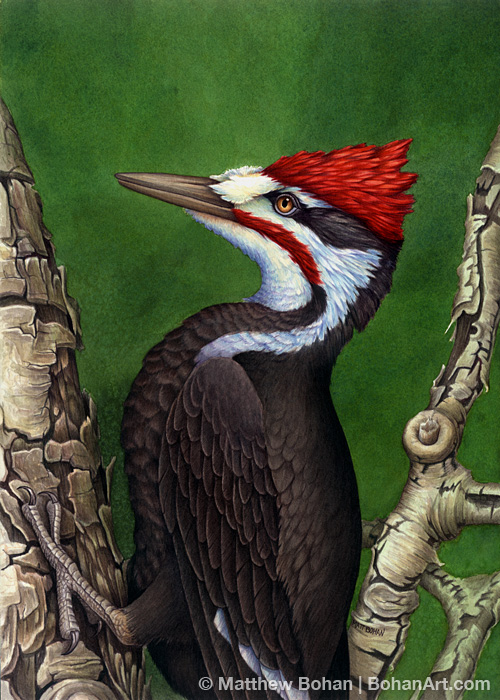
Although I did this painting few years ago, I scanned it in as it was being painted, so I thought it would be worth sharing as a “work in progress” series.
PIleated woodpeckers lived in the woods around our house where I grew up in western NY. They are starting to come back to the mid-Michigan area where I live now. They used be hard to find in the area.
Brown-headed Cowbird Sketch
Birders are never to happy to see brown-headed cowbirds. They are brood parasites, laying their eggs in the nests of other birds. Its not uncommon to see a tiny common yellow-throat warbler trying to feed an enormous baby cowbird almost double the parents size. The female cowbird will usually push one of the host birds eggs out, then lay hers in its place. Some birds catch on tho the cowbirds and will either eject its egg, or rebuild a new layer of nest over the existing eggs and start all over. They prefer open cupped nests, like those of the yellow warbler.

Ruby Meadowhawk Dragonfly Step-by-step
I’ve been painting a lot of dragonflies lately. Lots of great color to play with. Here is the latest, a step-by-step through the process of painting a male ruby meadowhawk. These are really cooperative insects… so much so that my kids enjoy getting them to perch on their fingers!
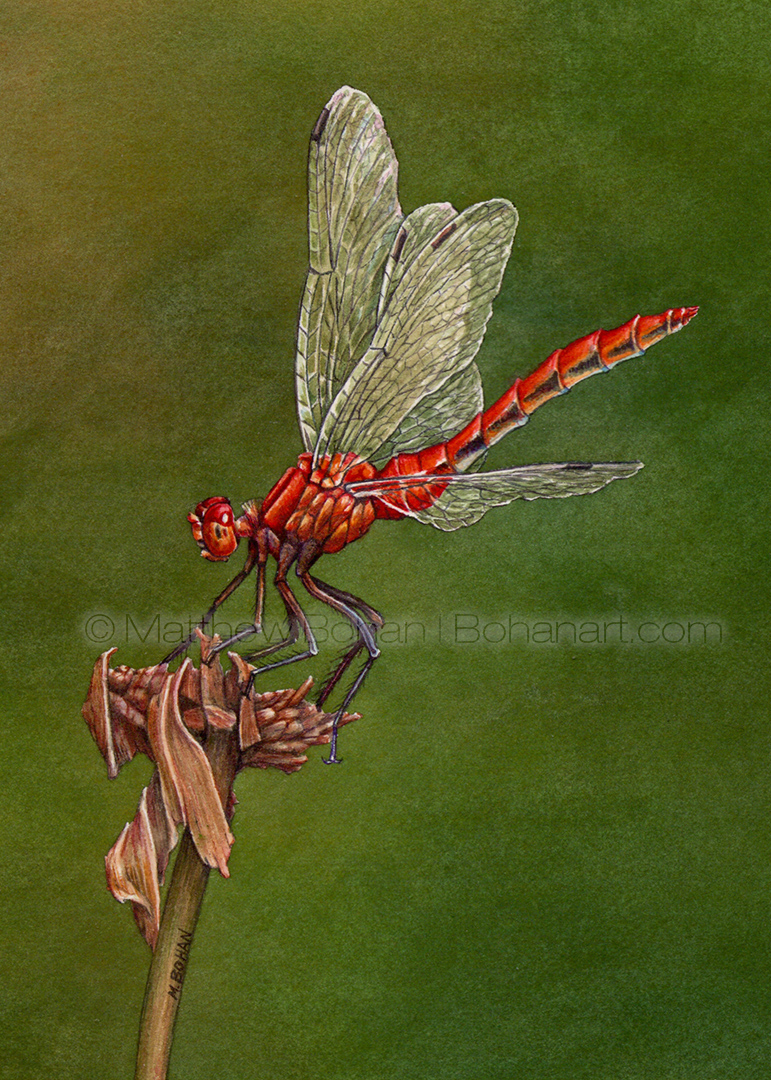
Ruby Meadowhawk (5×7 inch Transparent Watercolor) Original Available.
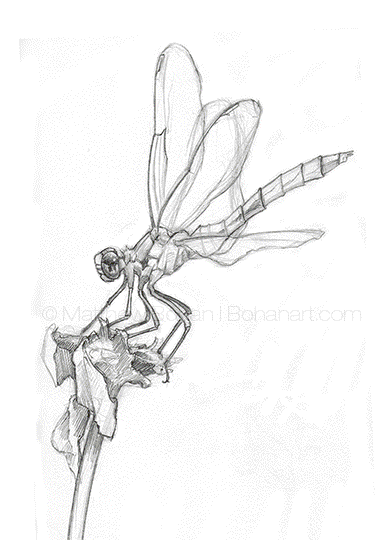
Airbrushes vs. Washes
I have spent a lot of time using airbrushes and really loved them for a long time. If you want a perfectly smooth background or soft gradient, they are hard to beat. They excel at very soft and very hard edges. When I was fresh out of school for illustration, I used airbrushes all the time, especially to mimic the effect of low-depth-of-field backgrounds. They look very convincing, very photographic. People often seem drawn to these backgrounds. Almost twenty years ago I did a large painting of a Belted Kingfisher with an airbrushed background. I still get a lot of positive comments on that painting, but when I look at it, I just see the airbrushed background.
I have a collection of airbrushes that I really like. They are great tools, and in the days before PhotoShop, they were “go to” tools for illustrators.
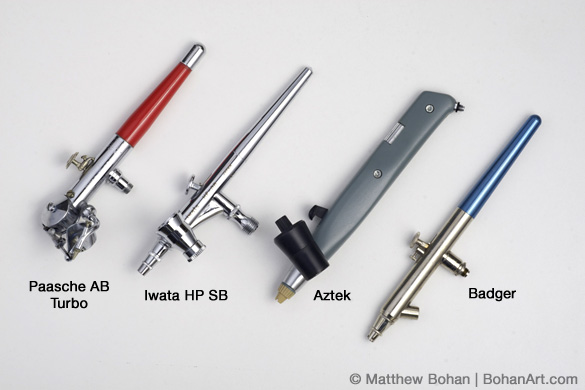
When I used them for watercolor paintings, they often looked… well, very airbrushed. Sometimes that got in the way of the subject of the painting, sometimes not. In all honesty, I used the airbrush as a crutch for the weak areas of my watercolor technique. Large, smooth washes of intense colors and subtle gradients can be very hard to control, especially when trying to keep the level of detail high. So I’d turn on the compressor, put on the respirator, and spray in a background. While that may make it sound fast and easy, in fact many of the airbrushed backgrounds took a very long time, such as the water in this 18 x 24-inch painting of a purple gallinule. At other times the background colors were thought out carefully and the airbrush just allowed me to apply them very efficiently.

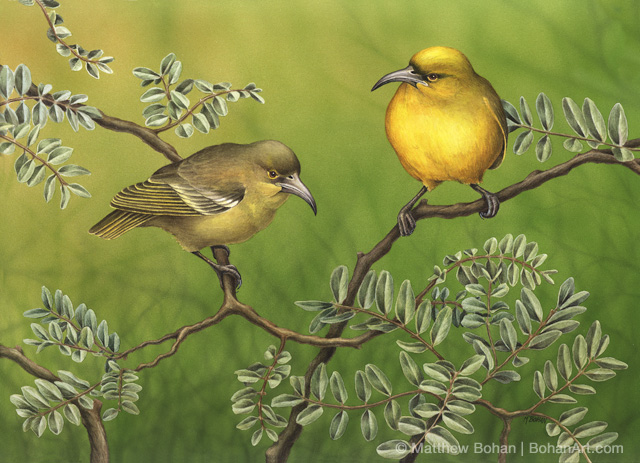
In the end, I ended up noticing the airbrush in the paintings—more than I want. I also notice its use in other people’s paintings. There is a certain quality about it that is recognizable. Sometimes that gets in the way of an image, while at other times it integrates well.
I decided to really spend some time working on the weakest part of my watercolors, the large washes which were so easy with an airbrush. I got more and more comfortable with wet-on-wet and wet-on-dry washes over large areas. I really learned a lot about pigments as well: which ones are staining and which are sedimentary. This has a profound impact on how a wash goes down. I finally got to the point where I could pretty much do anything with traditional brushes that I had previously done only with an airbrush.
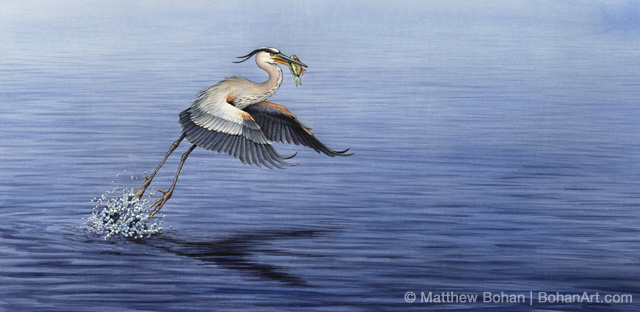
What I found surprised me a little. I always preferred the watercolor washes over airbrushed ones. The washes actually sink into the paper and react with it, while the airbrushed paint seems to sit on top of it. As the watercolor reacts with the paper, it takes on a different quality—sometimes they are tiny anomalies with the way the wash went down, but they seem to have a vibrancy and life to them that never really happened with an airbrush for me. Because the airbrushed background sort of sits on top of the paper, I found that an errant drop of water hitting the background would totally change the appearance of the paint as it settled in. That can ruin the smooth background just airbrushed in.
Here are magnified samples of a traditional wash versus airbrushed background from the paintings above.


…and a few swatches from details of other paintings shown actual size.
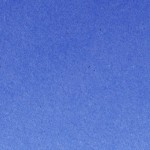
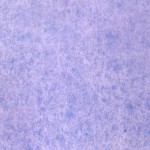
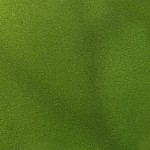
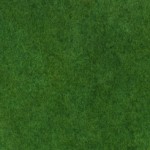
I almost always prefer the look of washed backgrounds.
I haven’t used my airbrushes in seven or eight years now. The last times I used them was to save a painting or two where the background got out of hand, and I used the airbrushes to reign them back in. (Occasionally, I would use an airbrush with gouache to lighten a background that got too dark.) Since then, I have really concentrated on my washes and found that I can accomplish “airbrush jobs” with washes, and I like the end results better. It’s a personal preference, but I’m more drawn to a well-done wash and the qualities inherent to the medium than the super-smooth airbrushed look.
For example, I’m not sure I could’ve accomplished the background of this swimming Penguin in airbrush.
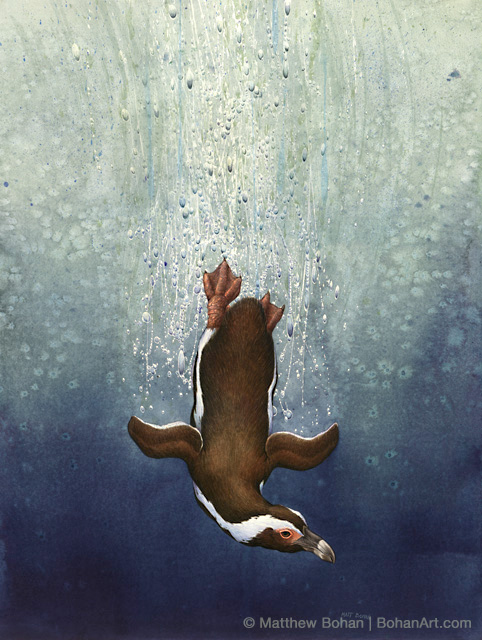

I’m still happy with the airbrushed backgrounds on many of the paintings, like the amakihi and gallinule where I spent a lot of time rendering form. However, I do feel a little guilty about those where I just sprayed in an even background or simple gradient because my wash technique wasn’t that great. At some point I’ll probably pull out an airbrush again if a particular project calls for it, and I’m sure it will still be fun. But for now I enjoy not hearing the compressor and not wearing a respirator while painting.
One thing is for sure, there is always something to learn with watercolor!

